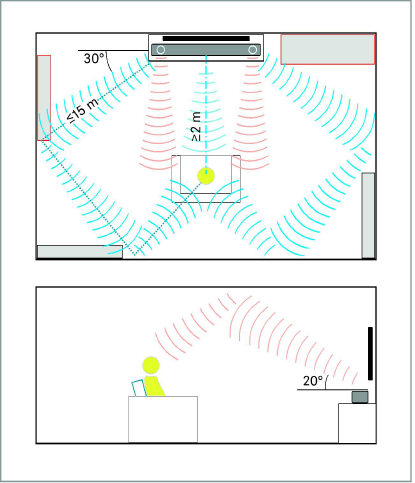My main living space is shaped like a "race track oval". Would a Sennheiser Ambeo provide good acoustics in this shape?
My desktop configuration is an:
- 36' x 15' x 9' (13m x 5m x 3m, LWH).
- I don't find the 13m x 5m ratio conducive for a 5.1 setup.
- I am considering a Genelec configuration, but the shape of the space is awkward for a Genelec system.
- A 2m (six foot high) "knee wall" separates the main living area from the small bedroom.
- The bedroom is irregularly shaped, but roughly 10'x 10' x 9' (or roughly 3m x 3m x 3m).
- The knee wall is roughly in the center of the main living space.
- I open to taking some type of audio measurements that I am unaware of, if that would somehow help.
- Ambeo Calibration process lacks detail.
- The Ambeo is 127cm wide and 14cm tall
- Would fit perfectly on top of the 8 foot long knee wall that is six feet from the floor.
- Connected to a subwoofer.
- My basic 24" SoundCore soundbar works very well at the foot of my bed.
My desktop configuration is an:
- RME DAC
- AudioEngine HD3 (micro) speakers and
- two REL T/Zero Mark III subwoofers.
- normal conversation volume levels (60 db?)
- arm's length distance
- acoustic music
- jazz
- classical
https://assets.ctfassets.net/4zjnzn.../Genelec_Immersive_Solutions_Guide_-_2021.pdf
These rectangular 7.1.4 and circular 5.1 layout diagrams differ substantially.
I am only interested in 5.1 music, without consideration for TV. I don't own a TV.
- The seating position ("S") for 5.1 circular diagram is positioned at the center of the room, not oriented according to the walls.
- The flaw with rectangular positioning is that it ignores acoustic focal points achieved by an oval shape.
- Dolby Atmos 7.1.4 is not a direct overlay over 5.1.
- The positions, distances, angles and wall orientation differ.

5.1 audio positioning layout. The walls are missing from this diagram, so assume a square room. The chair is positioned in the center of the square.

Last edited:

